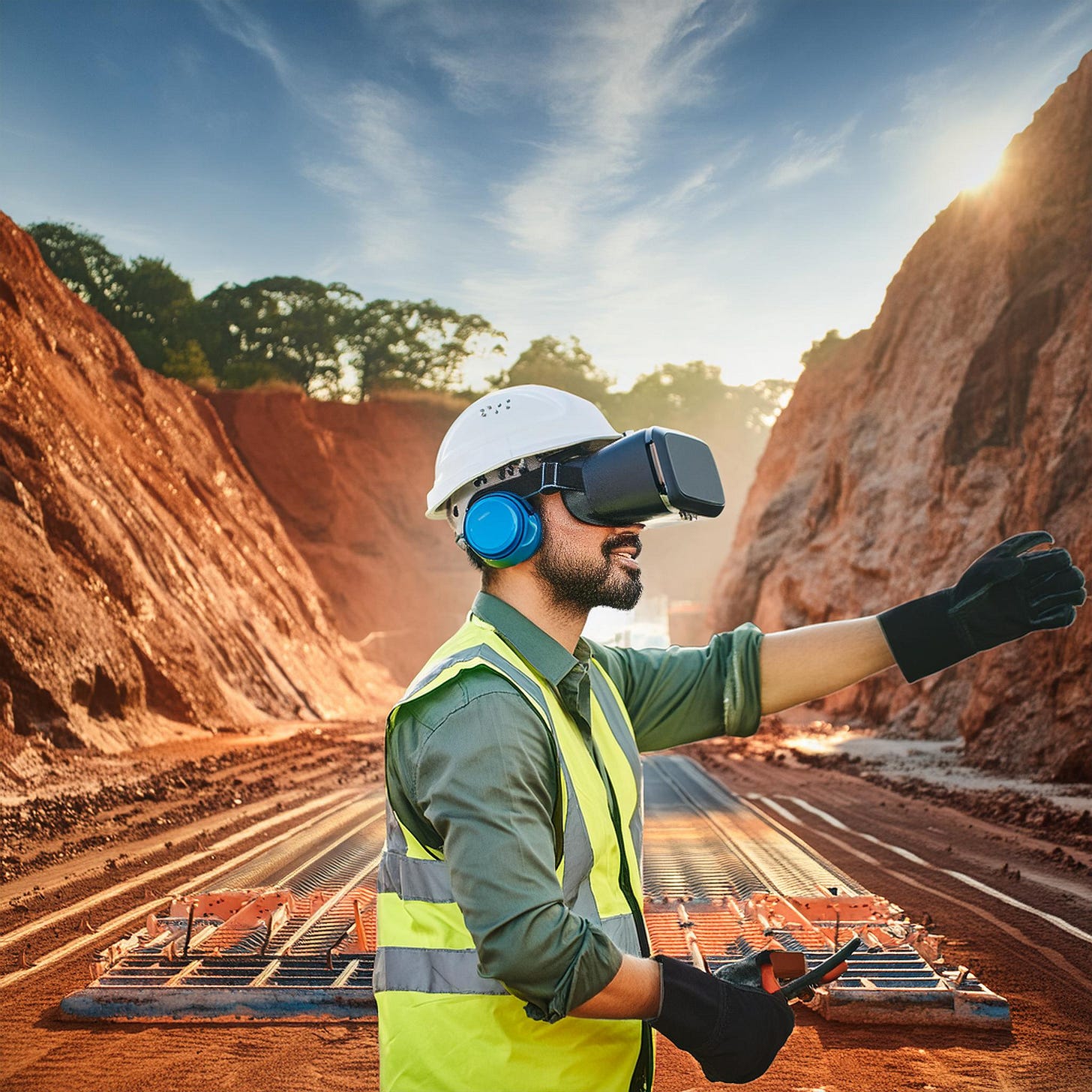Clint Kling of Shepherd VR joins multimedia journalist Jason Spiess to discuss some news changes happening in the world of Virtual Reality, specifically in the training areas of the Marines and Army.
The idea of VR dates back to the mid-20th century, with early inspirations stemming from science fiction. The first tangible step towards VR was Morton Heilig's Sensorama in the 1960s, a mechanical device aimed at immersing users in an interactive environment.
The 1980s saw VR gaining momentum with the development of the first VR headset by Jaron Lanier, who also coined the term "virtual reality."
“With training, over the long haul, you can save time and money,” Kling said. “Mining we were able to put somebody in a more hazardous situation without actually hurting them, allowing their mind to adapt to the environment rather than shock it in realtime.”
VR in Mining Training
Several years ago, Kling developed a mining training program in partnership with South Dakota School of Mines in the Black Hills.
According to Kling, underground and surface mines can be hazardous places, so when it comes to safety training in the mining profession, the old saying “practice makes perfect” holds true. To improve hazard safety instruction, a team at South Dakota Mines has spent the past year developing a virtual reality (VR) training module that mimics a mining environment with Kling.
“We are using new technologies combined with neuroscience to help people learn faster and more effectively,” says Clint Kling, a mining engineering doctoral graduate student who is currently working on the project under the guidance of Associate Professor Purushotham Tukkaraja, Ph.D..
The VR hazard awareness training is designed for new and inexperienced miners and will be available in English or Spanish. It will be conducted alongside the already existing MSHA training program at South Dakota Mines, the local mine sites, and will also be used in MSHA’s refresher training courses.
“There is much thought in the background detail that goes into every move and interaction in the environment to give the end-user the most effective and beneficial training. A successful VR training module is in the creation of its storyboard,” says Kling. “We are pleased that MSHA gave us the opportunity to develop our idea to help make the mining world a better and safer place to work,” Dr. Tukkaraja adds.
“We want people to go home safely to their families at the end of the workday. We hope to create a safe mindset that will carry with them wherever they go. The first step in controlling workplace hazards is to identify and determine which hazards are present.” Kling says. “Our brain is always learning even when it’s negative and including the things you don’t do. So, your behavior in your everyday life is important; each one of them is changing your brain. We need to break the habits and behaviors that are not healthy."
Traditionally, mining workplace safety has been a complex subject to effectively convey in a classroom or even on the job because of all the dangers involved.
“Having trained in VR ensures the person's safety but also shows them the potential hazards of a mining environment. We see the benefits of VR for safety training and the future of it as well. Our goal is to develop a lasting training program using VR because of its proven effectiveness,” says Dr. Tukkaraja.
VR in Military Training
The military has embraced VR to revolutionize its training methodologies. Traditional training methods often come with high costs and risks.
“What we'd like to call, like the external factors, there's things that you do in real life that, that have an effect on your learning ability,” Kling said. “Whether it's a distraction or nervousness or anything that's kind of randomized, and in the VR world it's kind of nice where you can isolate it a little bit more so that that person in training has a bit of a more isolated environment to where they're actually just focusing on the things they're supposed to be focusing on.”
VR offers a safer, cost-effective alternative, allowing soldiers to experience realistic combat scenarios without the associated dangers.
On Site Preparedness: VR simulations create realistic battlefield environments, enabling soldiers to practice maneuvers, tactics, and decision-making in a controlled setting. This kind of training is especially useful for rare or high-risk scenarios that are difficult to replicate in real life. Mining is similar, but with machines, rocks and nature to consider.
Health and Wellness: VR is also used to address the mental health of soldiers. It offers therapeutic applications, such as exposure therapy for PTSD, where soldiers can confront and process traumatic experiences in a safe, virtual space. Currently the Army is integrating it into counseling for suicide prevention.
Safety Training: VR simulations provide a risk-free platform for miners to experience and respond to potential hazards. This includes practicing emergency evacuations, machinery operations, and handling hazardous materials.
Operational Efficiency: By simulating real-world mining and military operations, VR allows engineers to understand the complexities of machinery and specialized techniques. This training ensures that when they are on-site, they are better prepared and more efficient.
The Future of VR in Training
As VR technology continues to evolve, its applications in training are expected to expand further. The increasing realism and interactivity of VR environments promise even more effective and comprehensive training programs across various industries. This technology not only enhances skill acquisition but also significantly improves safety and preparedness, setting a new standard for training in high-risk professions.
“when we're developing trainings, we really want to try to look at like the core things that you want to have the person learn,” Kling said. “Then you can kind of step it up from there and add the little extras you know to make the scenario a little bit harder or the emotions a little bit higher depending on you know what you're trying to accomplish.”
Kling added that what he’s seen is that virtual reality is real enough for your brain to not know the difference.
“Our goal is to make the worlds between virtual and actual reality so real it actually slows down time in order for your brain to work ahead,” Kling said. “Like in sports how athletes will say time will slow down before they hit the ball, it’s like that except in mining, military and energy.”
Anyone with questions on virtual reality or would like to interview Kling, email clint(at)shepherd(dot)fit. Or visit his website www.shepherd.fit.
Witting Partners
Witting Partners helps energy industry leaders achieve and sustain peak performance by combining an unmatched blend of oil & gas experience, insight, and results with the power of leadership coaching, workshops, and keynotes so that you and your stakeholders don't un-wittingly damage your odds of achieving long-term success.
If you want to produce 𝑺𝑼𝑺𝑻𝑨𝑰𝑵𝑨𝑩𝑳𝑬 results, then turn to a resource with 15+ years of proven success stretching from the Gulf of Mexico to Appalachia, from service company to operator, and from drilling rig to downtown boardroom.
To learn more, visit Witting Partners’ website or follow on LinkedIn.



















Share this post